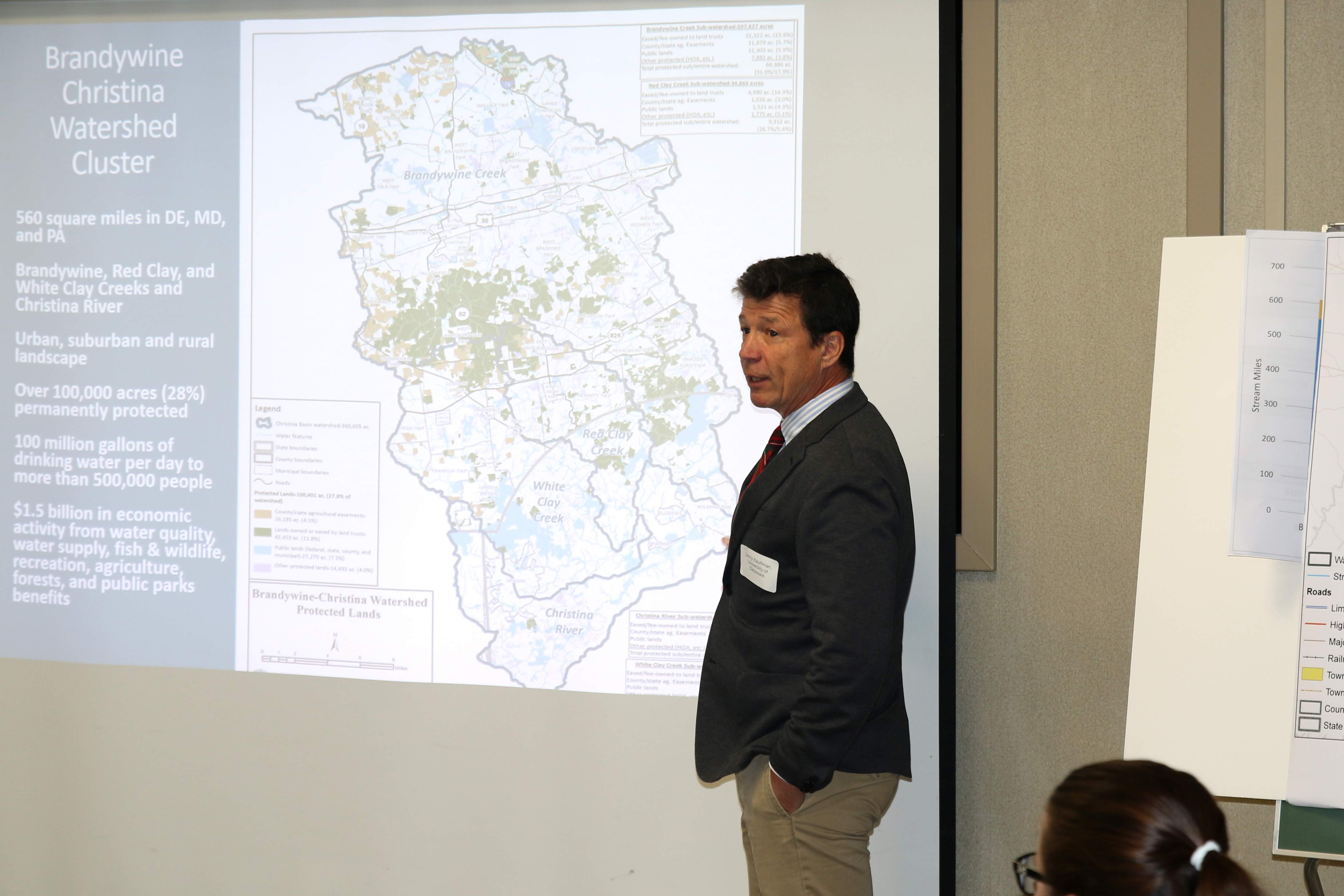
On May 10, 2019, regional transportation groups and the Brandywine-Christina Watershed Partners met for a lively roundtable discussion regarding roads and stormwater runoff. Key stakeholders, including state and local government, highway departments and regional transportation groups within the watershed, joined the conversation to address their shared concerns with road runoff and regulations and how the groups could work together in the future to better protect streams and creeks within the watershed. The roundtable included representatives from Delaware DOT, New Castle Conservation District, City of Wilmington, Chester County Planning Commission, Chester County Conservation District, Pennsylvania DOT, Chester County Water Resources Authority, PA Turnpike Commission, WILMAPCO, White Clay Wild and Scenic, and the Center for Watershed Protection.
The transportation roundtable meeting was the first step in a series of on-going discussions resulting from last year’s Clean Water Conference—hosted by the Brandywine-Christina Watershed Partners—where road runoff was highlighted as a key concern impacting the health of the watershed. The Partners are comprised of six nonprofit organizations, brought together and funded by the William Penn Foundation’s Delaware River Watershed Initiative (DRWI), including the Brandywine Conservancy, Brandywine Red Clay Alliance, Natural Lands, Stroud Water Research Center, The Nature Conservancy in Delaware and the University of Delaware Water Resources Center. The Brandywine-Christina Watershed is one of eight targeted areas identified by the DRWI as priority areas where interventions could significantly safeguard or improve clean water. Together as part of the DRWI, the Partners are working to protect and restore water quality within the watershed, which encompasses over 565 square miles in parts of Delaware and Pennsylvania, including the Brandywine River, Red and White Clay Creeks, and the Christina River. Streams and rivers in the Brandywine-Christina watershed provide 100 million gallons of drinking water to more than 500,000 people each day.




